|
26|12|10
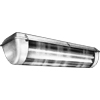 Updates to the REVO Catalogue include:
Updates to the REVO Catalogue include:
Sol-etern Street Lighting Fittings (new),
Sol-etern Street Lighting Fittings (improved and expanded),
Wall-mounted Street Lighting Fittings (improved and expanded),
Ornamental Street Lighting Fittings (improved),
Ornamental Street Lighting Fittings (improved).
This concludes the lantern section of the catalogue.
10|12|10
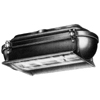 Updates to the REVO Catalogue include:
Updates to the REVO Catalogue include:
Cut-Off Street Lighting Fittings (improved and expanded),
Street Lighting Fittings (improved),
Street Lighting Fittings (improved),
Silverblue Street Lighting Fitting (improved and expanded) and
Cut-Off Street Lighting Fittings (improved and expanded).
06|12|10
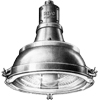 Updates to the REVO Catalogue include:
Updates to the REVO Catalogue include:
Cut-Off Fitting (new),
Critchley (new),
Silvergold (open) (improved and expanded) and the
Silvergold (enclosed) (improved and expanded).
11|10|10
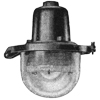 Peter Rivet has updated his history of Mackenzie and Moncur.
Peter Rivet has updated his history of Mackenzie and Moncur.
20|08|10
 The Philips SGS 201 lantern in my collection has now been documented.
The Philips SGS 201 lantern in my collection has now been documented.
15|08|10
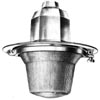 New scans, photometric information and formating have been added for this
Street Lighting Fitting and I've added
the preface of the GEC catalogue.
New scans, photometric information and formating have been added for this
Street Lighting Fitting and I've added
the preface of the GEC catalogue.
I've also completed some other parts of the catalogue because I've been identifying fixtures for various museums.
Therefore the Ornamental Street Lighting Fittings section has been
updated (along with details of a new lantern), the
Section 9: Title Page has been fixed and the
Angelo concrete columns have been added.
|
The Festival lantern was designed by lighting engineers at Birmingham City Council to celebrate the Festival of Britain and
manufactured by REVO Electric Company Limited of Tipton, Stafford. The lantern and its associated fluted and decorated
column were oddly antiquated and slightly at odds with the futuristic Festival of Britain, but modern appeal was realised
by the utilisation of the newly introduced fluorescent tube which was used as its lighting source.
Initial examples were installed throughout the centre of Birmingham. However, REVO put it into their catalogue (as lantern number C13428),
where it enjoyed limited success as an ornamental unit, being pressed into use along seaside promenades, within civic centres,
and in areas of special interest. Festivals were installed in locations as diverse as Weymouth, London and York (where eight
Festivals lit the approach to the York Minster).
However, it was limited for general street lighting as most of the light flux was directed outwards instead of towards the road
and pavement surface. This was realised by REVO when they classed it as an ornamental lantern; they also tellingly mentioned
the lanternís ability to light the roadway and adjacent buildings suggesting that maximum benefit could only be achieved by
indirect lighting reflected from close surroundings.
The lantern appeared in REVOís catalogue in the early 1950s and was soon joined by a miniature version for side streets (lantern
number C14038 and C14040). It was remodelled in the 1960s and given a futurist tapered bowl, perhaps an attempt by the
company to disguise its classical leanings. It was also the basis of the bespoke Richardson Candle which still light the
central streets of Cambridge: architect Alfred Richardson smoothed its fussy lines to create a more austere unit for the city.
But the mergers and reorganisations of the manufacturing and electrical firms in the late 1960s saw the demise of REVOís street
lighting business and the Festival was no longer offered for sale.
The various installations were gradually replaced by more efficient lighting sources in the 1980s and 1990s. By the end of the
2010s, virtually all the Festivals had been removed and lost, thus mirroring many of the original buildings and structures
originally erected for the Festival of Britain in 1951.
Brief history of the REVO Festival
|
13|08|10
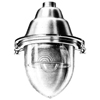 New scans, photometric information and formating have been added for this
Street Lighting Fitting.
New scans, photometric information and formating have been added for this
Street Lighting Fitting.
The provenance of my REVO B6024 swan neck bracket and
REVO C13721/T has been corrected. (It turns out that
my lantern and bracket is the one in the photograph of the derelict ward block).
I've started scanning and uploading a GEC catalogue from the late 1930s. It begins with a short
introduction about the current theory of street lighting
(and is already anticipating the final MOT Report which was published in 1937).
09|08|10
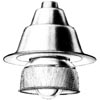 Thanks to Mike Ashworth, I know have a better and more complete copy of the REVO Street Lighting Fittings
catalogue from the early 1950s. I've begun to fill in the missing pages: REVO Electric Street Lighting,
Various Installations and
Street Lighting Fittings.
Thanks to Mike Ashworth, I know have a better and more complete copy of the REVO Street Lighting Fittings
catalogue from the early 1950s. I've begun to fill in the missing pages: REVO Electric Street Lighting,
Various Installations and
Street Lighting Fittings.
07|08|10
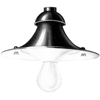 And here's the REVO B6024 swan neck bracket on which the
REVO C13721/T lantern is fitted.
And here's the REVO B6024 swan neck bracket on which the
REVO C13721/T lantern is fitted.
05|08|10
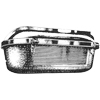 Here's my REVO C13721/T lantern which has just been added to the collection.
Here's my REVO C13721/T lantern which has just been added to the collection.
03|08|10
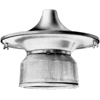 Has it been so long since the last update? I've been very busy behind the scenes (scroll to the bottom).
Has it been so long since the last update? I've been very busy behind the scenes (scroll to the bottom).
31|03|10
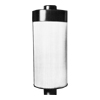 ... and finally concludes with the
Gamma Nine.
... and finally concludes with the
Gamma Nine.
30|03|10
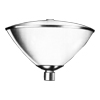 The Thorn catalogue continues with the
Gamma Eight...
The Thorn catalogue continues with the
Gamma Eight...
28|03|10
 I was out urban exploring yesterday and spotted some interesting survivors at a couple of sites:
GEC Oxfords at one location and
Metrovic Gowers at the other.
I was out urban exploring yesterday and spotted some interesting survivors at a couple of sites:
GEC Oxfords at one location and
Metrovic Gowers at the other.
27|03|10
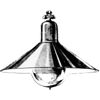 And the catalogue concludes with
Brackets.
And the catalogue concludes with
Brackets.
26|03|10
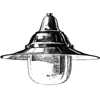 ... and the
Classic and Sheerline columns.
... and the
Classic and Sheerline columns.
25|03|10
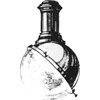 Introducing the Thorn
Leader and Lucerna columns...
Introducing the Thorn
Leader and Lucerna columns...
24|03|10
 The REVO Small Swan Neck bracket in the collection has been rephotographed.
The REVO Small Swan Neck bracket in the collection has been rephotographed.
23|03|10
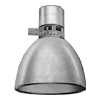 ... and whoever originally scanned this catalogue missed out the Gamma Eight and Nine. So, I'll scan those later this week, but for
now we conclude the Thorn lanterns with the
High Tower lantern.
... and whoever originally scanned this catalogue missed out the Gamma Eight and Nine. So, I'll scan those later this week, but for
now we conclude the Thorn lanterns with the
High Tower lantern.
22|03|10
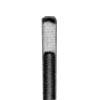 ... and the
Gamma Seven...
... and the
Gamma Seven...
21|03|10
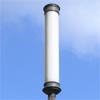 I have now written up the full history of the
Richardson Candles.
I have now written up the full history of the
Richardson Candles.
20|03|10
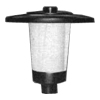 ... and the
Gamma Six...
... and the
Gamma Six...
19|03|10
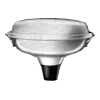 ... and the
Gamma Five...
... and the
Gamma Five...
18|03|10
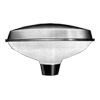 ... and the
Gamma Four...
... and the
Gamma Four...
17|03|10
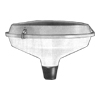 ... and the
Gamma Three...
... and the
Gamma Three...
16|03|10
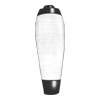 ... and the
Gamma Two...
... and the
Gamma Two...
15|03|10
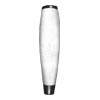 Introducing the
Gamma One...
Introducing the
Gamma One...
14|03|10
 Here's my Thorn Beta 8 lantern and a
medium Lucy bracket.
Here's my Thorn Beta 8 lantern and a
medium Lucy bracket.
13|03|10
 Before continuing with the Thorn catalogue, I thought I'd publish some more pictures of items in my collection. Today it's the
extremely rare Z8256 and a medium sized Lucy bracket.
Before continuing with the Thorn catalogue, I thought I'd publish some more pictures of items in my collection. Today it's the
extremely rare Z8256 and a medium sized Lucy bracket.
And here's some pictures which really should've remained unpublished.
12|03|10
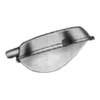 ... and the
Beta 9 completes the Group B range.
... and the
Beta 9 completes the Group B range.
11|03|10
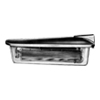 ... the
Beta 8...
... the
Beta 8...
10|03|10
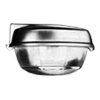 ... the
Beta 7...
... the
Beta 7...
09|03|10
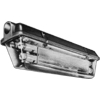 ... the
Beta 6...
... the
Beta 6...
08|03|10
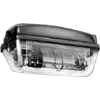 ... the popular
Beta 5...
... the popular
Beta 5...
07|03|10
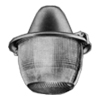 ... and with the Beta 2 and Beta 3 both discontinued, the next lantern is the
Beta 4...
... and with the Beta 2 and Beta 3 both discontinued, the next lantern is the
Beta 4...
06|03|10
 The side road lanterns begin with the Beta 1...
The side road lanterns begin with the Beta 1...
05|03|10
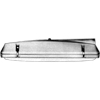 ... and the main road range wraps up with the Alpha 10.
... and the main road range wraps up with the Alpha 10.
04|03|10
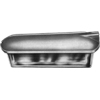 ... and there was no Alpha 8 in 1972 so we skip onto the Alpha 9 ...
... and there was no Alpha 8 in 1972 so we skip onto the Alpha 9 ...
03|03|10
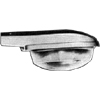 ... the Alpha 7 ...
... the Alpha 7 ...
02|03|10
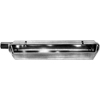 ... the Alpha 6 ...
... the Alpha 6 ...
01|03|10
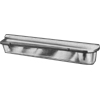 ... and there was no Alpha 4 in 1972 so we skip onto the Alpha 5 ...
... and there was no Alpha 4 in 1972 so we skip onto the Alpha 5 ...
28|02|10
 ... and the Alpha 3 ...
... and the Alpha 3 ...
27|02|10
 ... and the Alpha 2 ...
... and the Alpha 2 ...
26|02|10
 And we're off with the Alpha 1 ...
And we're off with the Alpha 1 ...
25|02|10
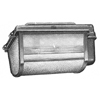 Considering the complexity of Thorn's numbering system, it's a miracle any lighting engineers managed
to order a complete lantern. Collectors don't use this system either and switch to the less precise descriptive language i.e. "deep bowl Alpha 3".
Considering the complexity of Thorn's numbering system, it's a miracle any lighting engineers managed
to order a complete lantern. Collectors don't use this system either and switch to the less precise descriptive language i.e. "deep bowl Alpha 3".
24|02|10
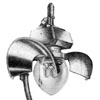 And the street lighting section of the Highway Reference Book concludes with a sample of
Sugg's Lanterns.
And the street lighting section of the Highway Reference Book concludes with a sample of
Sugg's Lanterns.
23|02|10
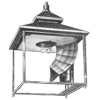 The popular (well it was at the time) Maxilla lanterns from Parkinson
are next covered in the Highway Reference Book.
The popular (well it was at the time) Maxilla lanterns from Parkinson
are next covered in the Highway Reference Book.
22|02|10
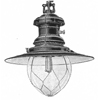 The gas section of the Highway Reference Book now moves onto
Keith Blackman Ltd.
The gas section of the Highway Reference Book now moves onto
Keith Blackman Ltd.
21|02|10
 The gas section of the Highway Reference Book now samples some of the range by
William Edgar & Son Ltd.
The gas section of the Highway Reference Book now samples some of the range by
William Edgar & Son Ltd.
20|02|10
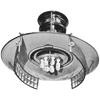 A new section brings all the previously published pages from the Highway Reference Book together. There's also an
introduction to gas lighting but it appears incomplete so I'll chase up the rest of the article. The underlying principles outlined
for the design of gas lanterns are also the same for the electric ones.
A new section brings all the previously published pages from the Highway Reference Book together. There's also an
introduction to gas lighting but it appears incomplete so I'll chase up the rest of the article. The underlying principles outlined
for the design of gas lanterns are also the same for the electric ones.
19|02|10
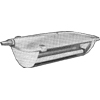 Lee Gale is back and has been taking pictures of ancient concrete columns found
around North London.
Lee Gale is back and has been taking pictures of ancient concrete columns found
around North London.
18|02|10
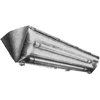 The electrical section of the Highway Reference Book concludes with a section on the Siemens range of
Wilton-Sieray Fluorescent lanterns.
The electrical section of the Highway Reference Book concludes with a section on the Siemens range of
Wilton-Sieray Fluorescent lanterns.
17|02|10
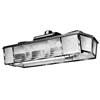 A selection of previously unpublished REVO Lanterns are next featured in
the Highway Reference Book.
A selection of previously unpublished REVO Lanterns are next featured in
the Highway Reference Book.
16|02|10
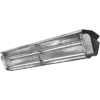 Highway Reference Book moves onto the Metropolitan Vickers
lanterns and helps flesh out their range. (And note how many of their lanterns were actually made by ELECO).
Highway Reference Book moves onto the Metropolitan Vickers
lanterns and helps flesh out their range. (And note how many of their lanterns were actually made by ELECO).
15|02|10
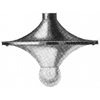 The GEC and
Holophane entries in the
Highway Reference Book have been published before, but they've now been reformatted and tidied up. The
Lucy section is new.
The GEC and
Holophane entries in the
Highway Reference Book have been published before, but they've now been reformatted and tidied up. The
Lucy section is new.
14|02|10
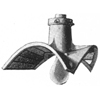 The Highway Reference Book moves onto the
ELECO range. This fills in many of the existing gaps, including the
Golden Ray Mark I and Golden Ray Mark II lanterns, and completes the three different versions of
the Welwyn. Other lanterns appear for the first time.
The Highway Reference Book moves onto the
ELECO range. This fills in many of the existing gaps, including the
Golden Ray Mark I and Golden Ray Mark II lanterns, and completes the three different versions of
the Welwyn. Other lanterns appear for the first time.
13|02|10
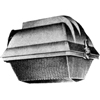 The Highway Reference Book is next to be tackled. Dating from 1951, it includes pictures and descriptions of
street lighting equipment from many of the major manufacturers. The first page
includes examples from BTH.
The Highway Reference Book is next to be tackled. Dating from 1951, it includes pictures and descriptions of
street lighting equipment from many of the major manufacturers. The first page
includes examples from BTH.
12|02|10
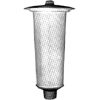 And the Phosco catalogue concludes with the
Wall-Mounted Gear Box And Bracket,
Installation Photographs and the
back cover.
And the Phosco catalogue concludes with the
Wall-Mounted Gear Box And Bracket,
Installation Photographs and the
back cover.
11|02|10
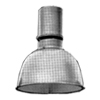 The
Phosco P212 is the first high mast lantern
featured on this website.
The
Phosco P212 is the first high mast lantern
featured on this website.
10|02|10
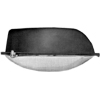 The last "standard" street light in the Phosco catalogue is the
P211 Cut Off.
The last "standard" street light in the Phosco catalogue is the
P211 Cut Off.
09|02|10
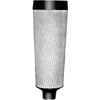 The various different versions of the
P140 have now been added.
The various different versions of the
P140 have now been added.
08|02|10
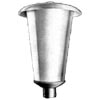 The P142 ushers in a small range of post top fluorescent lanterns.
The P142 ushers in a small range of post top fluorescent lanterns.
I believe the mystery of the P141/mod has also been solved. Phosco
redesigned many of their original enclosed sodium lanterns (the P120 - P128) at some point in the 1950s with smaller bowls, smaller canopies
and with Oddie keys repositioned the side of the bowls instead of housed in a protrubing lip. This new range was called the P152 - P157.
The P141 was also similarly redesigned, now appearing as the
P141/mod.
07|02|10
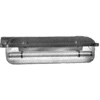 Unfortunately there isn't much information about the
P141/mod: it's a modification of
the P141 but there isn't any explaination for the changes nor where this lantern
would be used.
Unfortunately there isn't much information about the
P141/mod: it's a modification of
the P141 but there isn't any explaination for the changes nor where this lantern
would be used.
06|02|10
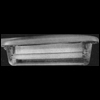 The Phosware catalogue starts the fluorescent range with the
P141.
The Phosware catalogue starts the fluorescent range with the
P141.
05|02|10
 Unfortunatley, whoever scanned the Phosware catalogue omitted pages 18 and 19, so the
P.154/5 and P.156/7 SCO are missing from this record.
Unfortunatley, whoever scanned the Phosware catalogue omitted pages 18 and 19, so the
P.154/5 and P.156/7 SCO are missing from this record.
The P160/1 SCO(S) lanterns have added an element of confusion to the
Phosco catalogue. The lantern pictured (a 150W SOX lantern) is strikingly different from the previous version,
illustrated in a different catalogue from almost ten years previously (see below). Hopefully this difference will be explained in time.
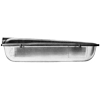
04|02|10
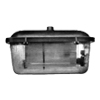 More information has been added about the P152 Sodium Lantern.
More information has been added about the P152 Sodium Lantern.
03|02|10
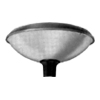 The huge
P169 Mushroom lantern merits only a profile picture and installation shot in
the Phosco catalogue.
The huge
P169 Mushroom lantern merits only a profile picture and installation shot in
the Phosco catalogue.
02|02|10
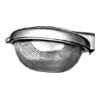 And the tiny
P177 lantern makes its debut on this website.
And the tiny
P177 lantern makes its debut on this website.
01|02|10
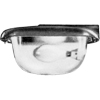 We return to the Phosco catalogue with the
P148 and P149 lanterns.
We return to the Phosco catalogue with the
P148 and P149 lanterns.
31|01|10
 The
Thorn Beta 2 in my collection has now been documented.
The
Thorn Beta 2 in my collection has now been documented.
30|01|10
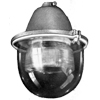 And the Phosware catalogue continues with the
P104 and P132 lanterns.
And the Phosware catalogue continues with the
P104 and P132 lanterns.
29|01|10
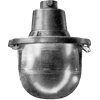 The
P100 and P101 lanterns are the next two lanterns briefly described in the
Phosware booklet.
The
P100 and P101 lanterns are the next two lanterns briefly described in the
Phosware booklet.
28|01|10
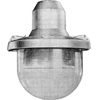 The next set of adverts from Public Lighting No 109 (June 1960)
have now been published.
The next set of adverts from Public Lighting No 109 (June 1960)
have now been published.
27|01|10
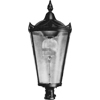 The
P109/10 Georgian lantern is the second of two decorative lanterns from the
Phosware range.
The
P109/10 Georgian lantern is the second of two decorative lanterns from the
Phosware range.
26|01|10
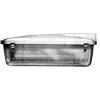 The next set of adverts from Public Lighting No 109 (June 1960) have now been published.
The next set of adverts from Public Lighting No 109 (June 1960) have now been published.
25|01|10
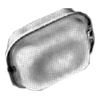 Skipping ahead slightly, the Phosco
P158 lantern is next to be published.
Skipping ahead slightly, the Phosco
P158 lantern is next to be published.
24|01|10
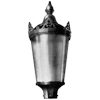 The
P111 Promenade lantern is the first of two decorative lanterns from the
Phosware range.
The
P111 Promenade lantern is the first of two decorative lanterns from the
Phosware range.
23|01|10
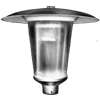 The next set of adverts from Public Lighting No 109 (June 1960) have now been published.
The next set of adverts from Public Lighting No 109 (June 1960) have now been published.
22|01|10
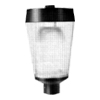 The next few pages of the Phosco catalogue are concerned with
various post top lanterns.
The next few pages of the Phosco catalogue are concerned with
various post top lanterns.
21|01|10
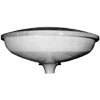 I've started uploading the first set of adverts from Public Lighting No 109 (June 1960).
I've started uploading the first set of adverts from Public Lighting No 109 (June 1960).
20|01|10
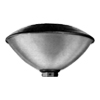 And here's the Phosco P170/1 Post Top.
And here's the Phosco P170/1 Post Top.
19|01|10
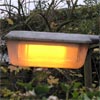 Dating from the late 1950s, this Siemens Ediswan Orson lanterns is one of
the rarest lanterns in the collection.
Dating from the late 1950s, this Siemens Ediswan Orson lanterns is one of
the rarest lanterns in the collection.
18|01|10
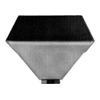 The next Phosco lantern is the P172 Post Top. (Although this
lantern has already featured on the website, albeit it as the Philips MU4).
The next Phosco lantern is the P172 Post Top. (Although this
lantern has already featured on the website, albeit it as the Philips MU4).
17|01|10
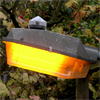 Keeping with the Phosco theme, here's the Phosco P225
in my collection.
Keeping with the Phosco theme, here's the Phosco P225
in my collection.
16|01|10
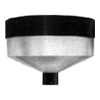 As my knowledge of Phosware lanterns was shown to be lacking, I've decided to concentrate next on
a Phosware booklet from 1968.
As my knowledge of Phosware lanterns was shown to be lacking, I've decided to concentrate next on
a Phosware booklet from 1968.
And, it's amazing how many classic lanterns have yet to be documented on this website. So, we kick off with the classic,
and C.o.I.D. winner, P178 Post Top.
15|01|10
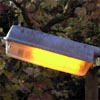 A farily modern lantern, and the last low pressure sodium lantern designed by the GEC, is next
to be photographed: the Whitecroft SRL35A.
A farily modern lantern, and the last low pressure sodium lantern designed by the GEC, is next
to be photographed: the Whitecroft SRL35A.
14|01|10
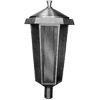 And the final lantern for this range of GEC catalogues is the
GEC Z8455 lantern.
And the final lantern for this range of GEC catalogues is the
GEC Z8455 lantern.
13|01|10
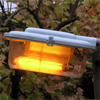 I've clarified the various models and options of the Phosco P153 on the
Phosco P153 (First Version) and
Phosco P153 (Third Version) pages.
I've clarified the various models and options of the Phosco P153 on the
Phosco P153 (First Version) and
Phosco P153 (Third Version) pages.
12|01|10
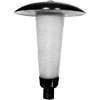 The penultimate GEC post-top lantern from this range:
GEC Z8454 lantern.
The penultimate GEC post-top lantern from this range:
GEC Z8454 lantern.
11|01|10
 My Phosco P153 posted on the 7th has caused some comment. It seems there were more variants of this
lantern than I was aware of. (Many thanks to Simon Brown for pictures of another version).
My Phosco P153 posted on the 7th has caused some comment. It seems there were more variants of this
lantern than I was aware of. (Many thanks to Simon Brown for pictures of another version).
So, with his information, I've written about the Phosco P153 (First Version) lantern
in my collection. Simon Brown has the second version and I documented the third a couple of days ago.
The write-up for the third version will be modified to incorporate these changes in the next couple of days.
10|01|10
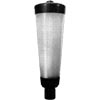 We're back to standard street lighting lanterns with the GEC Z8451 lantern.
We're back to standard street lighting lanterns with the GEC Z8451 lantern.
09|01|10
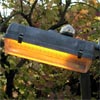 This lantern was the first I obtained way back in the late 1980s. Rescued from an old derelict factory it's a
Philips SXK 55 lantern.
This lantern was the first I obtained way back in the late 1980s. Rescued from an old derelict factory it's a
Philips SXK 55 lantern.
08|01|10
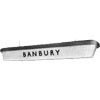 And here's the third and final of GEC's railway lanterns: the GEC Z8290 Under Canopy lantern.
And here's the third and final of GEC's railway lanterns: the GEC Z8290 Under Canopy lantern.
07|01|10
 Next from the collection is the third version of the
Phosco P153 lantern.
Next from the collection is the third version of the
Phosco P153 lantern.
06|01|10
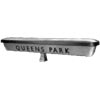 Here's the second of the GEC's railway lanterns: the GEC Z8288 Railway Platform lantern.
Here's the second of the GEC's railway lanterns: the GEC Z8288 Railway Platform lantern.
05|01|10
 My early Thorn Beta 5 is the next lantern in the collection to
be fully documented.
My early Thorn Beta 5 is the next lantern in the collection to
be fully documented.
04|01|10
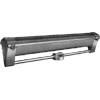 This is another lantern from the GEC Clearspace range which isn't directly concerned with street lighting
but merits inclusion here: the GEC Z8285 Railway Platform lantern.
This is another lantern from the GEC Clearspace range which isn't directly concerned with street lighting
but merits inclusion here: the GEC Z8285 Railway Platform lantern.
03|01|10
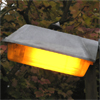 My ELECO GR525 is the next lantern in the collection to
be fully documented.
My ELECO GR525 is the next lantern in the collection to
be fully documented.
02|01|10
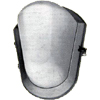 Unfortunately, some of the pages for the
GEC Z5720 & Z5725 Limpet lanterns is missing so the documentation of
this lantern is incomplete. However, there is enough there to determine that this bulkhead lantern took either two
GLS bulbs or a single mercury bulb.
Unfortunately, some of the pages for the
GEC Z5720 & Z5725 Limpet lanterns is missing so the documentation of
this lantern is incomplete. However, there is enough there to determine that this bulkhead lantern took either two
GLS bulbs or a single mercury bulb.
01|01|10
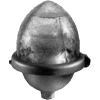 The next few lanterns from the Clearspace range are rather specialised. In fact, it could be argued that they're not street lighting
at all, but specialised area lighting. However, the GEC included them in their street lighting division (the 'Z' section) so
I'll include them here. The first is a lantern designed specifically for Sub-Station lighting, the
GEC Z5130 lantern.
The next few lanterns from the Clearspace range are rather specialised. In fact, it could be argued that they're not street lighting
at all, but specialised area lighting. However, the GEC included them in their street lighting division (the 'Z' section) so
I'll include them here. The first is a lantern designed specifically for Sub-Station lighting, the
GEC Z5130 lantern.
The DAVIS Starline GR70 is the next lantern in my collection to be cleaned up and
photographed.
|



